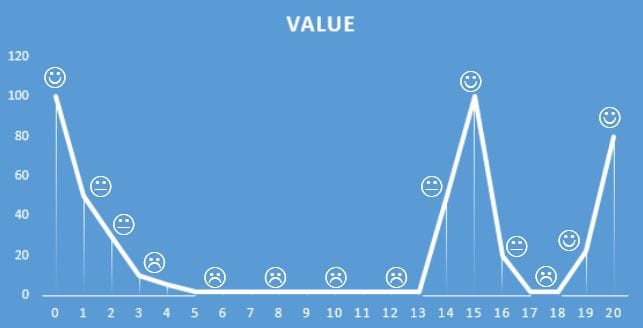Talking heads – How much are they really needed?
By Matt Jenner, on 13 March 2013
What are you looking at?
Earlier today I was reminded of a topic I’ve wanted to explore more ever since I worked with Carl Gombrich from UCL’s BASc Arts and Sciences programme. In conversation about his flipped classroom model he mentioned, in passing, that people ‘can close the talking head’ and watch the other video feed, make notes, browse the web or simply walk around and listen. This instantly raised several questions:
- What’s the value of the talking head?
- Why do they close the talking head?
- Is there something happening here we have not explored enough?
- Why did Matt put his picture on this blog post?
I was reminded of this today, in a meeting with an external group I noticed most of the people around the room starred into the conference phone. Most did it when they were talking, others for listening – those who looked to be thinking of complex mathematical formulas and the science of life (or lunch) gave a mixed set of data. Without any research backing whatsoever (hold tight), Carl is right. When watching a recorded lecture, people can close that talking head at their discretion. For lecture capture we’re talking about a camera fixed to the back of the room, a pixellated academic who goes in and out of shot but does have their best tie on. The other thing to consider is that focusing on the captured display device might be a preference anyway – as it’s showing the projected content but this is a bigger video, centered to the screen – it’s more dominant.
So what is the value of the talking head?
As indicated by my very technical graph made from assumptions alone (yikes) I’d expect to see it starts really high, peaks around a muddy spot, point of clarification or unexpected event and then finally towards the end. Otherwise I’d expect it drops to very low levels the rest of the time. What does this head add? Perhaps initially we want to see who’s talking to us, but I’d expect most people may know the speaker and instead want to know other questions. Previously these have ranged from:
- When studying from non-class/campus locations I like to see who’s talking to me
- I’m a social being, I like to see others
- Checking the speaker isn’t doing it in their pants from home
- And so on.
I am sure there’s better reasons, but ultimately we’re generally a social animal and perhaps it’s as simple as ‘I like to see them, at least for a bit’.
Why do people close the talking head?
Perhaps once we’ve confirmed how nice their office / home is and checked weather they are indeed wearing clothes we’re less attracted by this face and we close it off. A real study here would be fascinating. Imaging the same recording to thousands of people and all your measuring is when the talking head is closed/opened. With large classes or a MOOC this is easy or longitudinally over the same service and many, many different videos and viewers (i.e. Lecturecast) it’s also easy and the data should show measurable results.
Is there something happening here we have not explored enough?
I think so. If anyone out there has done more on this it would be interesting to see it. There’s something in here about clearly highlighting the level of human to human face-exposure. It’s higher than zero but I’d expect lower than 100%. But where does it sit? If anyone’s got more research/data do let me know. For distance learning or massive online courses, I think this information could be very interesting.
 Close
Close



